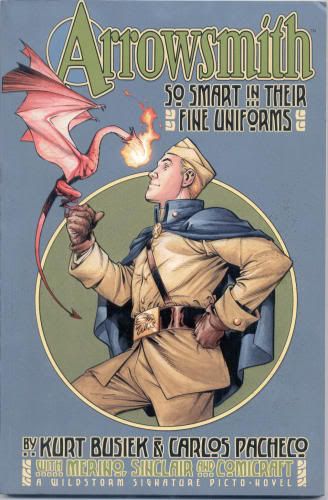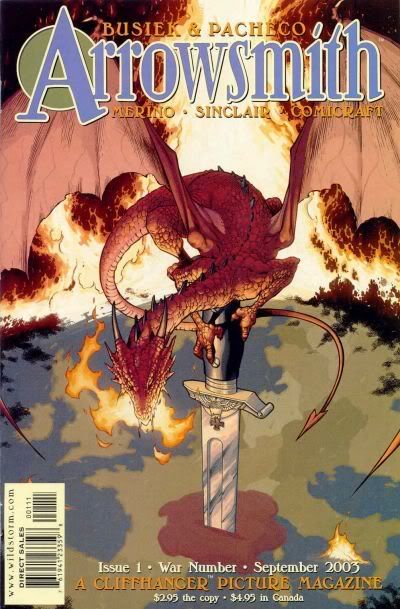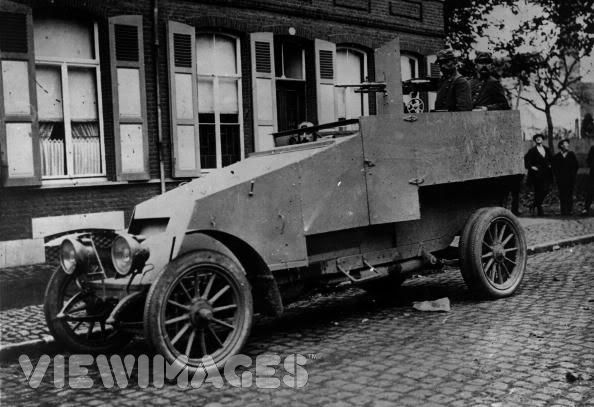So what is Soldiers and Spellfighters20?
Soldiers and Spellfighters is a modern fantasy RPG setting focused on the Great War (World War I) time period that uses the Modern20 system with a modified magic system.
The basic concept is to do for World War I what Deadlands did to the Civil War/Western genre or that Weird Wars did to World War 2.
So - why World War I?
It's one of the most dramatic wars of the 20th century -it started with armies fielding cavalry units with sabres and ended with tanks and triplanes. It really hasn't had an RPG treatment (with the exception of Wraith:the Great War) and with the plethora of interesting and weird historical personalities around the Great War time period (Rasputin, Czar Nicholas, Kaiser Wilhem, Mata Hari, Nikolai Tesla, the Red Baron and Pancho Villa) it's practically begging to be a game setting.
Also: dogfights with zeppelins, griffins, biplanes and wyverns=teh awesome.
How do you introduce magic into the Great War?
The premise is that the 1908 Tunguska event is caused by or causes the opening of portals from our plane to another where magic never went dormant. The opening of these gateways - and the accompanying introduction of magic -drastically changes our world - including how the Great War is fought.
The original press release (and an art preview) is found here
World War One meets fantasy? That's different. What are some of your inspirations?
1) The most significant inspiration is the comic mini-series/graphic-novel Arrowsmith by Kurt Busiek. To quote wikipedia : "The series is set in an alternate history Earth in which the United States is actually the United States of Columbia, magic is real, and the First World War is fought with and by dragons, spells, vampires and all other kinds of magical weapons and beings." Soldiers and Spellfighters has a lot of parallels with Arrowsmith. They're blendings of magical fantasy and war genres focusing on WWI. We take a different approach in our backstory - we have magic re-emerging in 1908 and changing the world, while Busiek has an alternative history of a world where magic has always been real.
Like Arrowsmith, we focus a lot of attention on the aerial combat in the Great War - but our pilots are in biplanes or riding griffins or wyverns - while in Arrowsmith they were usually literally flying via magic.
The series is well worth checking out. It has been collected in the graphic novel So Smart in their Fine Uniforms . Here are a couple covers from Arrowsmith.


2) While there's no fantasy elements here - the movie Flyboys ( Trailer is here) .
is a fun, recent movie dealing with WWI aerial combat.
To quote wikipedia again: "The film follows the enlistment, training and combat experiences of a group of young Americans who volunteer to become fighter pilots in the Lafayette Escadrille, the 124th air squadron formed by the French in 1916. The squadron consisted entirely of American volunteers who wanted to fly and fight in World War I during the conflict's early years, 1914-1917, before the United States joined the war against the Central Powers."
Here's the one sheet for Flyboys and here's a clip from the film, showcasing a dogfight around a zeppelin.

3) The web comic Alpha Shade needs to be mentioned. It is clearly manga influenced and has many science fiction elements - but has strong commonalities with Soldiers and Spellfighters -ie much of the combat involves flying magical beasts, airships and biplanes. It's well done and highly recommended. (Links go to the Alpha Shade Wallpaper gallery.)
Soldiers and Spellfighters is a modern fantasy RPG setting focused on the Great War (World War I) time period that uses the Modern20 system with a modified magic system.
The basic concept is to do for World War I what Deadlands did to the Civil War/Western genre or that Weird Wars did to World War 2.
So - why World War I?
It's one of the most dramatic wars of the 20th century -it started with armies fielding cavalry units with sabres and ended with tanks and triplanes. It really hasn't had an RPG treatment (with the exception of Wraith:the Great War) and with the plethora of interesting and weird historical personalities around the Great War time period (Rasputin, Czar Nicholas, Kaiser Wilhem, Mata Hari, Nikolai Tesla, the Red Baron and Pancho Villa) it's practically begging to be a game setting.
Also: dogfights with zeppelins, griffins, biplanes and wyverns=teh awesome.
How do you introduce magic into the Great War?
The premise is that the 1908 Tunguska event is caused by or causes the opening of portals from our plane to another where magic never went dormant. The opening of these gateways - and the accompanying introduction of magic -drastically changes our world - including how the Great War is fought.
The original press release (and an art preview) is found here
World War One meets fantasy? That's different. What are some of your inspirations?
1) The most significant inspiration is the comic mini-series/graphic-novel Arrowsmith by Kurt Busiek. To quote wikipedia : "The series is set in an alternate history Earth in which the United States is actually the United States of Columbia, magic is real, and the First World War is fought with and by dragons, spells, vampires and all other kinds of magical weapons and beings." Soldiers and Spellfighters has a lot of parallels with Arrowsmith. They're blendings of magical fantasy and war genres focusing on WWI. We take a different approach in our backstory - we have magic re-emerging in 1908 and changing the world, while Busiek has an alternative history of a world where magic has always been real.
Like Arrowsmith, we focus a lot of attention on the aerial combat in the Great War - but our pilots are in biplanes or riding griffins or wyverns - while in Arrowsmith they were usually literally flying via magic.
The series is well worth checking out. It has been collected in the graphic novel So Smart in their Fine Uniforms . Here are a couple covers from Arrowsmith.


2) While there's no fantasy elements here - the movie Flyboys ( Trailer is here) .
is a fun, recent movie dealing with WWI aerial combat.
To quote wikipedia again: "The film follows the enlistment, training and combat experiences of a group of young Americans who volunteer to become fighter pilots in the Lafayette Escadrille, the 124th air squadron formed by the French in 1916. The squadron consisted entirely of American volunteers who wanted to fly and fight in World War I during the conflict's early years, 1914-1917, before the United States joined the war against the Central Powers."
Here's the one sheet for Flyboys and here's a clip from the film, showcasing a dogfight around a zeppelin.

3) The web comic Alpha Shade needs to be mentioned. It is clearly manga influenced and has many science fiction elements - but has strong commonalities with Soldiers and Spellfighters -ie much of the combat involves flying magical beasts, airships and biplanes. It's well done and highly recommended. (Links go to the Alpha Shade Wallpaper gallery.)


